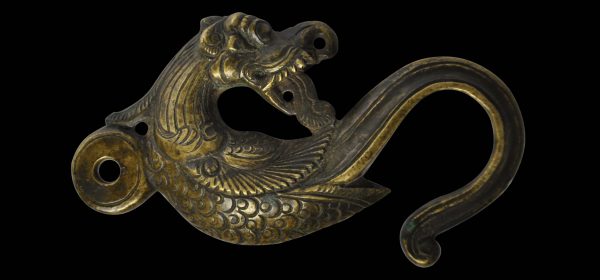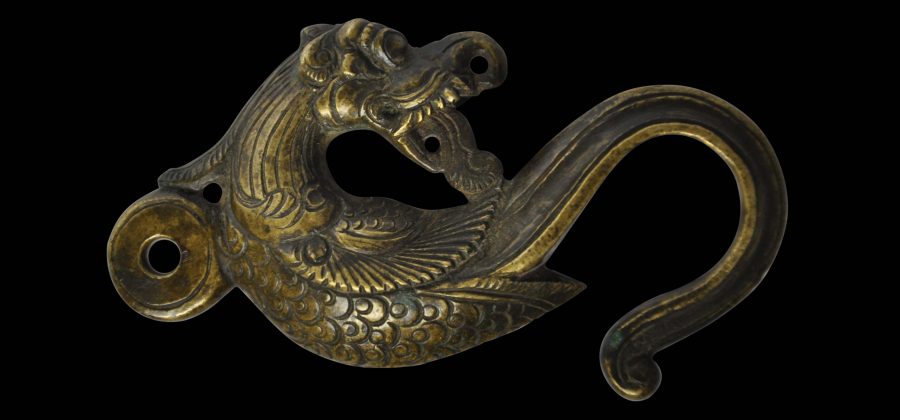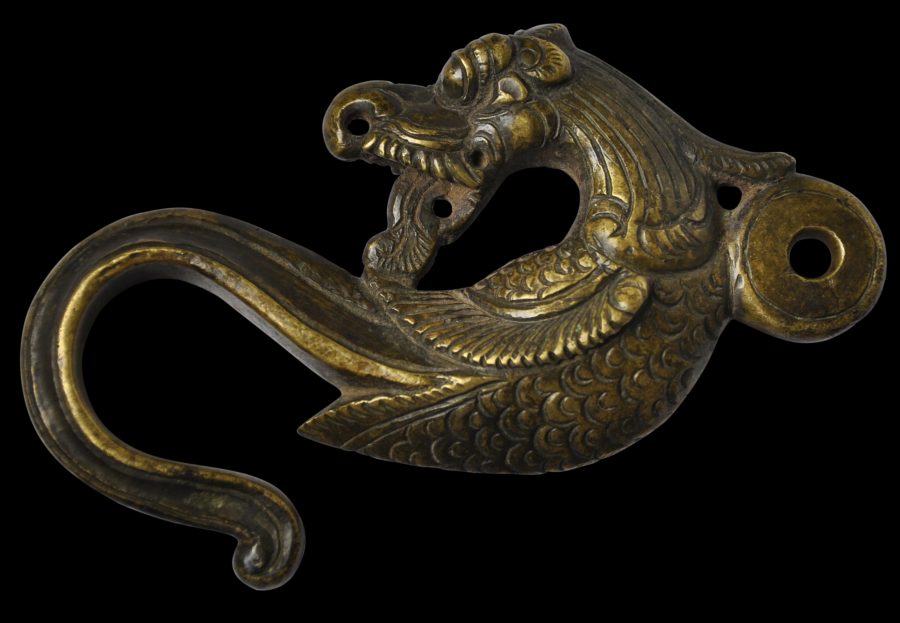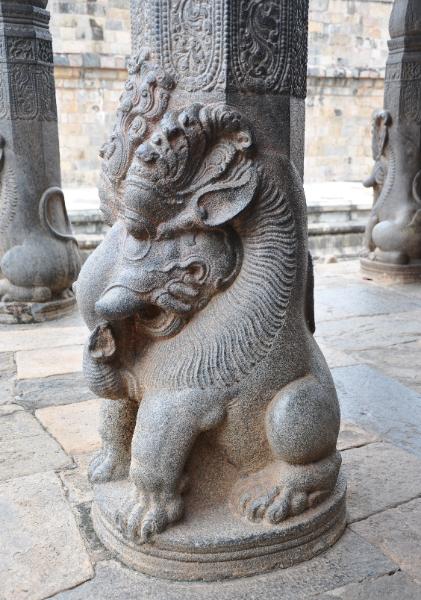This beautifully cast, small brass hook might have served to secure a temple or some other lamp. It is of cast brass and shaped as a yali (or vyala). It has a scaly, curled body, bulging eyes, a flowing mane, and a protruding tongue.
Although small in size, the form is modelled on the sculptural yali pillars of South Indian temple architecture. Pillars carved with rearing animals in this form first make their appearance in the architecture of the Vijayanagara empire in the sixteenth century (Jaffer, 2002, p. 67).
Chakravarthy (2010, p. 119) illustrates two related examples and mentions that such cat metal items were made in the Thanjavur (Thanjore) region by a community called the NKannars
The hook is particularly pleasing and probably was kept by a colonialist during colonial times as a small, interesting keepsake. It is in excellent condition and has a beautiful patina.
The final image shows an example of the architectural influence that the piece here draws from – a column base at the Kumbakonam – Darasuram temple in Tamil Nadu, south India, photographed in December 2014.
References
Chakravarthy, P., Thanjavur: A Cultural History, Niyogi Books, 2010.
Jaffer, A., Luxury Goods from India: The Art of the Indian Cabinet Maker, V&A Publications, 2002.





